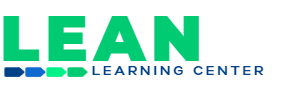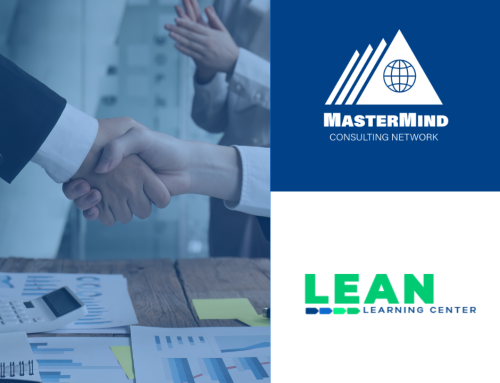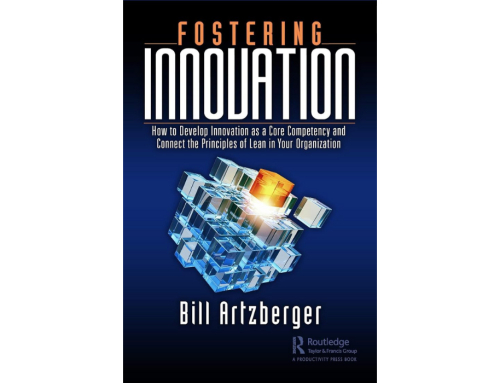A Storied History Of Lean
Bill Artzberger, PMP, LSSBB, is the managing partner at the Lean Learning Center. He specializes in Lean manufacturing, innovation, Lean Healthcare, leadership, and project management.
He has over thirty-five years of experience in real-world senior management, including CIO, VP, President, and CEO. He has worked with thousands of individuals from the boardroom to the shop floor, in virtually all sectors of industry. Bill holds two patents and brings extensive project management, lean manufacturing, and information technology experience to The Lean Learning Center. He has been published dozens of times and is a co-author of the top-selling Lean book, Driving Operational Excellence and author of Powering the Lean Enterprise. He is also an associate professor at Oakland University and a member of the OU Pawley Center advisory board.
He has successfully implemented Lean improvement projects in dozens of companies throughout the world. Bill is an expert in the usage of Lean techniques such as value stream mapping, error proofing, quick changeover, kaizens, kanban systems, 5S, and visual pull systems. He has taught hundreds of lean process classes and is an expert at driving large-scale operational change programs.
Bill’s new book, Fostering Innovation, launched into the market earlier this year. We recently asked him three questions about the writing process and his main goal behind the book.
Three Questions About Fostering Innovation
- What made you write a book about innovation and using Lean thinking to support innovation?
Over the years we have heard that many people do not believe Lean techniques and Lean thinking support innovation and creative thinking. I have even heard comments that Lean is “anti-innovation” Some of this is based on the interpretation of the first rule we use in Lean; “structure every activity”. Some people have interpreted this as “specify and control every activity”. This handcuffs the users to follow a rigid procedure every time with no possibility for changes, stifling innovation. This is not true. The opposite is the case.
For instance, if you have many different ways to accomplish a task (aka activity), how do you know which produces the best results? How do you consistently produce high-quality products or provide a high level of service? If you have a problem, which of the many methods used is the one that created the problem? If there are many methods used, how do you isolate the problem to fix it? If you want to improve a method you used, which do you improve? Do we improve them all? Have you ever wondered why you can produce high-quality products or services sometimes, but not always?
If everyone involved in the process is making changes, the methods will continue to diverge from each other and so will the results. Some of the methods will produce better results, and some may make things worse. This chaotic approach tends to focus on tribal knowledge and a free-for-all approach to improvements. Firefighting to get through the day becomes the norm. It is tough to make meaningful improvements when you are surrounded by chaos.
On the other hand, if the activity is well-structured with a single method used to produce the results, you will know which process produced the problem if one occurs. Then, you can collectively focus the team’s improvement efforts on a single process. This high degree of organizational maturity and process stability allows a much higher level of innovation and organizational learning.
Now the team can experiment and analyze the results. If the results are positive, they can adopt the new procedure (e.g. move the process from version 1.0 to 2.0, etc.). Everyone can use the new process and benefit from the improvements vs. one person using many different methods and is the only benefactor. Of course, if the experiment did not produce the results the team expected, they would not adopt the new procedure. Together, everyone gains the opportunity to learn and grow through participation, involvement, and high agreement. This is the difference between tribal knowledge and organizational knowledge.
Not only does this foster innovation, it increases employee engagement, and also improves retention. It is frustrating to work in an environment where nothing changes, nothing gets better, and the same problems and frustrations arise every day (ever feel like you are beating your head against the wall?). In a Lean, learning environment, you own the process with the power, support, and responsibility to innovate and make it better.
- Does a company need to be “Lean” to use the innovative techniques in the book Fostering Innovation?
Absolutely not. The innovative techniques in the book will help you foster Lean thinking in your company as well as encourage innovation, but you do not need to be using Lean methods to get a lot out of the book.
I would like to further clarify that a company does not become “Lean”, or get “Leaned Out”. This is a bit of a misuse of the “Lean” term. Lean is not about eliminating jobs. Lean is not a destination or a single checkmark of accomplishment. While the term “Lean” is derived from one of the Lean principles, “Systematic Waste Reduction”, it is not the most important principle. Lean is much more than waste elimination. Lean encompasses problem-solving and high agreement. Lean is a way of thinking and a journey. Lean is a behavior change and culture change.
“Lean” companies are first and foremost learning organizations. The term “Lean” is used to refer to this entire body of knowledge. You will still see the term “Lean” used in various, often inaccurate ways. There was a recent article in the Wall Street Journal that used the term “Lean” when referring to Spotify’s recent staff cuts. However, further down in the article, the CEO seemed to get it right when he said, “The Spotify of tomorrow must be defined by being relentlessly resourceful in the ways we operate, innovate, and tackle problems. Lean is not just an option but a necessity.”
- What revelations have you had when writing this book?
The biggest revelation would be that innovation is not just about looking for the “big leap” forward or the next big thing. Most innovation is focused on making many small, incremental improvements, regularly. The companies that can do both (big leaps and incremental improvements) are the ones that will consistently win.
Fostering Innovation will teach you how to do both.
*For a limited time, you can purchase a discounted copy of Fostering Innovation here.




